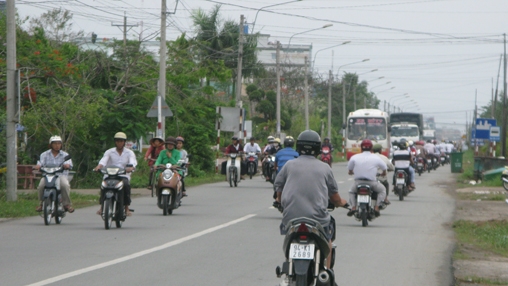Challenge
Traffic volumes on National Highway 1 (NH1), Vietnam‘s primary north-south thoroughfare, and other arterial roads were growing at 10-14 percent per year. Traffic growth outpaced road rehabilitation and more substantial investment was needed to reverse that trend, reduce congestion, and segregate road traffic through upgraded national road standards.
Moreover, there was a strong need for extending transport connectivity to rural populations in the Mekong Delta and ensuring permanent access to/from the seasonally-flooded region.
Solution
The World Bank funded project upgraded 180 kilometers of Highway 1 between Can Tho and Ca Mau in the Mekong Delta, and upgraded another 182 kilometers of national and provincial roads in the extended Mekong Delta transport system covering 18 provinces. These provided better road infrastructure, expanded access to the road and highway network in previously unconnected, underserved, and/or disruption-prone areas in both urban and rural settings, thus reducing transport and logistics costs for poor people in the Mekong Delta.
The project also provided technical assistance and capacity building towards updating road sector standards on design, construction, and safety while at the same time strengthening management and staffing capacity of the Ministry of Transport. Bank-financed infrastructure provision also promoted competitive and efficient project management practices that could contribute to the modernization of the domestic road construction industry.
Results
The project stimulated the commercial use of an improved transportation network. As a result:
- The system now transports nearly 11,5 million tons of goods compared to over 7 million tons of good in 2005.
- Travel time from the Mekong regional center (Can Tho City) to Ca Mau (southern most province) was reduced from 3.5 hours to only over 1 hour, facilitating trade and access to market.
- Fatal accident rate was reduced by 2/3, to 8/million vehicle-kilometre from 21/ million vehicle-kilometre without project intervention, while normal injuries were reduced by ¾.


